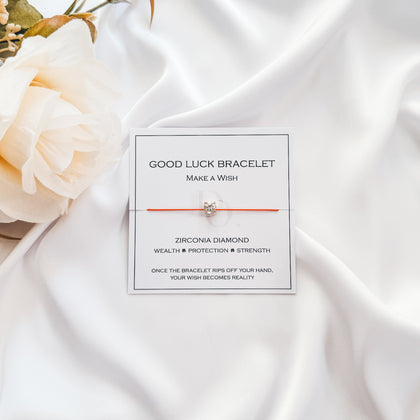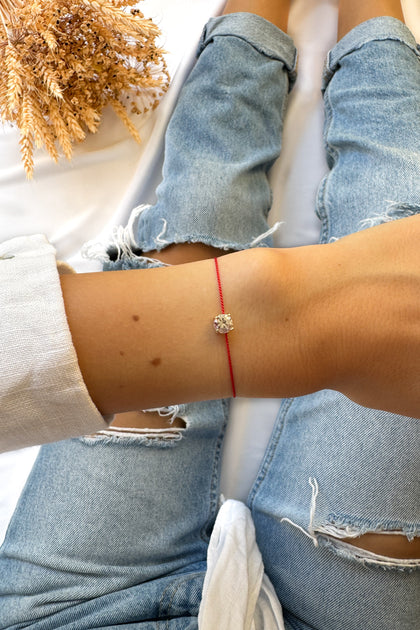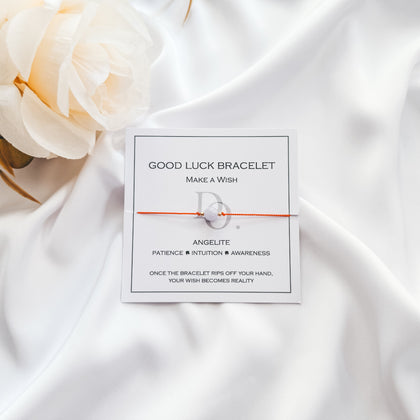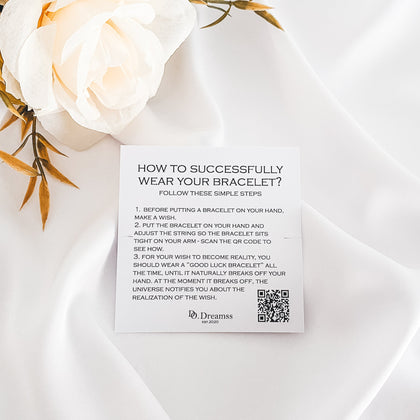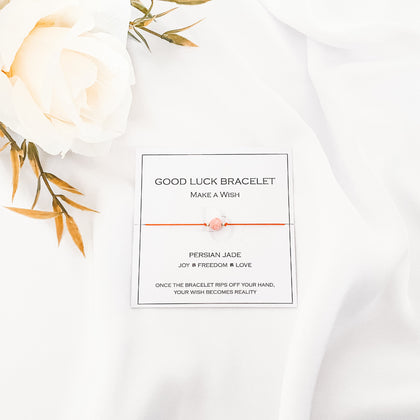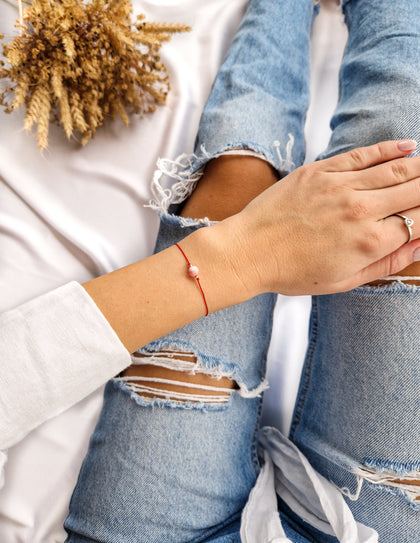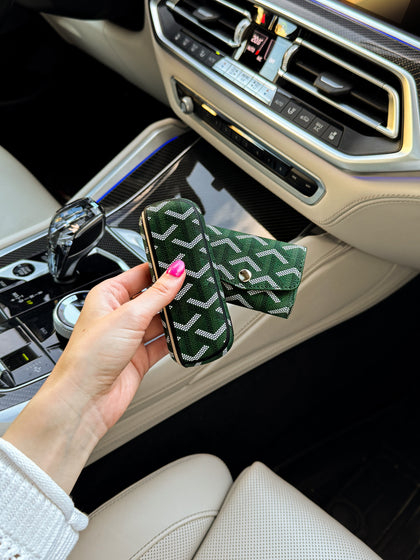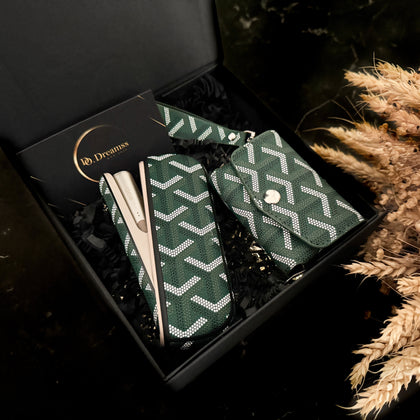The Lucky Edit by Do.Dreamss
Persian Jade Bracelets: Meaning, History, and How to Wear Them
Persian jade bracelets represent a fascinating blend of artistry, cultural symbolism, and timeless elegance. These stunning accessories carry centuries of tradition while offering contemporary appeal through their distinctive beauty and rich meaning. Originating from ancient trade routes connecting East and West, Persian jade jewelry holds a special place in the world of meaningful adornments, with bracelets being among the most cherished forms. For more about the world of chic accessories and meaningful jewelry, visit our go-to blog for chic accessories.
In this comprehensive guide, you'll discover the deep cultural significance of Persian jade bracelets, their historical importance, symbolic meanings across different colors, how to identify authentic pieces, stylish ways to incorporate them into your wardrobe, and proper care techniques to preserve their beauty for generations.
The historical and cultural significance of Persian jade
The story of jade in Persian culture begins thousands of years ago along the ancient Silk Road, where this precious stone traveled between East Asia and the Persian Empire. While jade has strong associations with Chinese culture, Persian artisans developed their own distinctive traditions and interpretations of this revered stone.
Persian jade work represents a fascinating cultural exchange between Eastern and Western artistic sensibilities.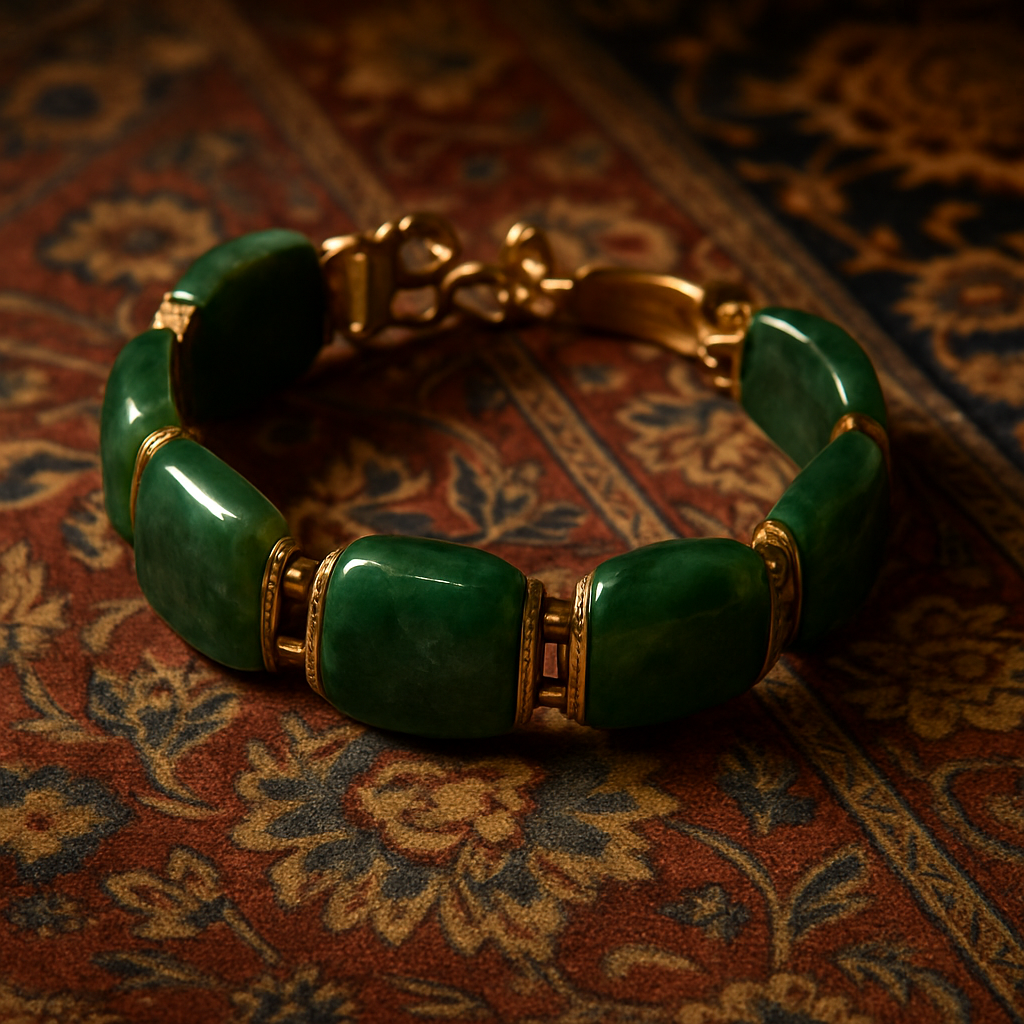
Historical records show jade objects appearing in royal Persian treasuries during the height of the empire, with rulers valuing the stone for both its beauty and perceived protective qualities. According to Persian legend, jade could detect poison by changing color, making it particularly valued among nobility concerned with assassination attempts.
Unlike some other precious materials that gained and lost favor through different eras, jade maintained consistent prestige in Persian culture. The stone's durability – it ranks between 6-7 on the Mohs hardness scale – made it ideal for creating heirloom pieces that would last for generations, a characteristic highly valued in Persian culture where family lineage and heritage hold tremendous importance.
Jade in Persian art and royal adornment
In Persian royal collections, jade appears not just in jewelry but also in ceremonial daggers, drinking vessels, and prayer beads. The Imperial Treasury in Tehran still houses remarkable examples of jade craft, including bowls carved from single pieces of jade and ceremonial weapons with jade hilts believed to offer protection to their wielders.
Persian artisans often combined jade with precious metals, particularly gold, which was thought to enhance jade's protective qualities. This fusion created distinctive aesthetics different from Chinese jade traditions, which often let the stone stand alone. Historical Persian jade pieces frequently feature intricate metalwork surrounding or enhancing the stone's natural beauty.
Browse our curated collection of meaningful, handcrafted pieces at Do.Dreamss where we continue this tradition of meaningful jewelry that connects past and present.
The meaning and symbolism of jade bracelets
Jade bracelets carry profound symbolic weight in Persian culture, representing a complex interplay of protective, prosperous, and spiritual qualities. Understanding these meanings helps appreciate why these pieces remain significant across generations and cultures.
At its core, the jade bracelet symbolizes protection. Traditional Persian belief holds that jade absorbs negative energy and diverts misfortune from its wearer. When a jade bracelet breaks, many still believe it has fulfilled its protective purpose by taking the impact of harm intended for its wearer.
Beyond protection, jade bracelets represent prosperity and abundance. The stone's connection to good fortune makes it a popular gift for new business ventures or major life milestones. In Persian tradition, jade's green color connects it to growth, renewal, and the flourishing of all endeavors.
On a spiritual level, jade symbolizes balance and harmony. Persian mystic traditions associate the stone with heart chakra energy, promoting emotional equilibrium and compassion. Many wearers describe feeling a sense of calm and centeredness when wearing jade consistently.
Family connections also feature prominently in jade bracelet symbolism. Passing a jade bracelet from mother to daughter represents the continuation of protection, wisdom, and familial bonds across generations. These inherited pieces are thought to carry the accumulated positive energy of previous wearers.
Jade color meanings and their Persian associations
While green remains the most recognized jade color, Persian jade traditions recognize the symbolic significance of various hues: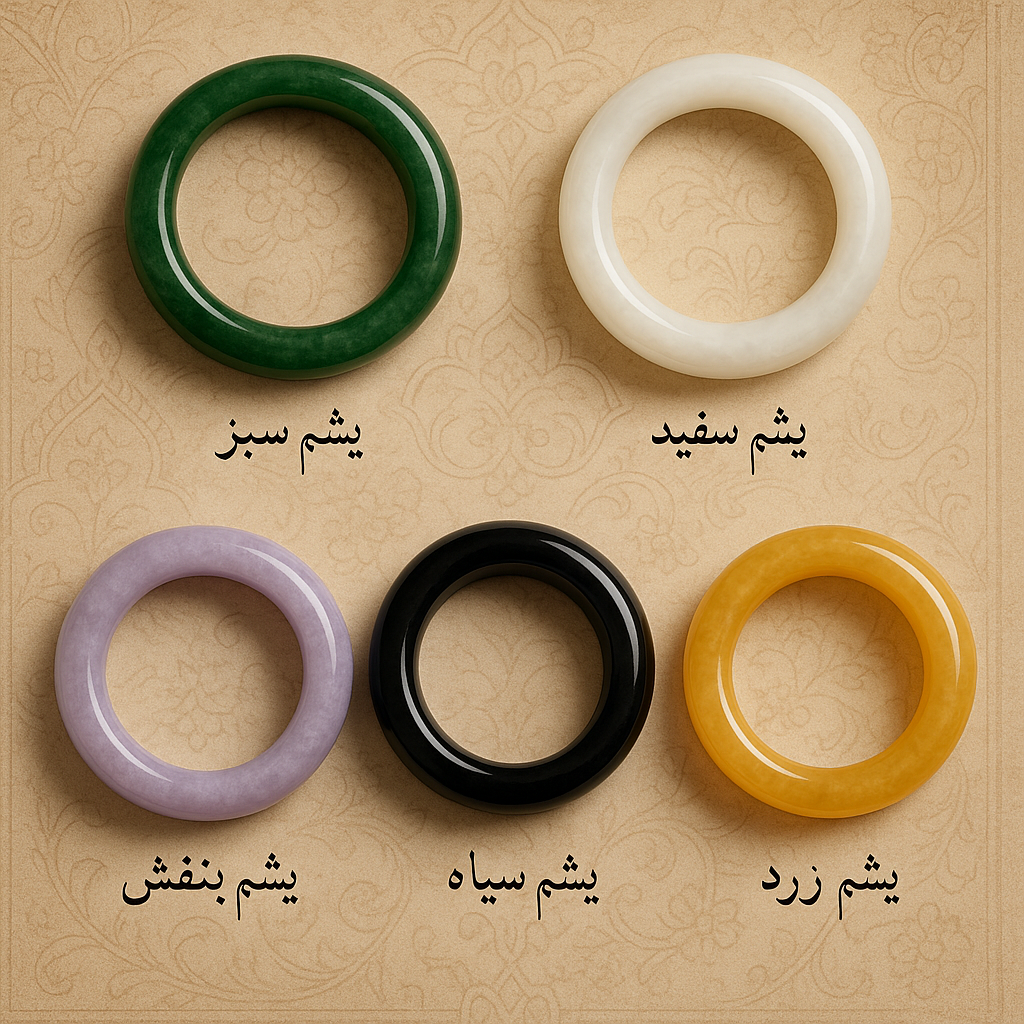
- Green jade – The most traditional color, representing vitality, growth, and harmony. Different green shades carry subtle variations in meaning, with deeper greens associated with wisdom and lighter shades with new beginnings.
- White jade – Symbolizes purity, clarity of thought, and spiritual elevation. In Persian traditions, white jade is often associated with spiritual seekers and those pursuing higher knowledge.
- Lavender jade – Represents spiritual awareness, intuition, and connection to higher realms. This rarer jade variety traditionally belonged to mystics and spiritual leaders.
- Black jade – Associated with protection against negative energies and grounding. Persian traditions connect black jade with strength and resilience through difficulties.
- Yellow/honey jade – Symbolizes intellectual growth, positive energy, and cheerfulness. This color was often recommended for scholars and those engaged in mental pursuits.
The specific shade variations within these colors carry additional nuanced meanings, with Persian traditions particularly attuned to the subtle energy differences between various jade specimens. A traditional saying suggests that "the jade finds its owner," indicating the belief that the right stone with the appropriate energetic properties will naturally be attracted to the person who needs those specific qualities.
Authenticity, quality, and identifying genuine Persian jade
With jade's cultural and monetary value, distinguishing authentic Persian jade from imitations becomes essential for collectors and enthusiasts. The market unfortunately contains numerous fake products marketed as genuine jade, making knowledge your best protection.
Genuine jade comes in two mineral varieties: nephrite and jadeite. Nephrite represents the more traditional form found in historical Persian pieces, characterized by its exceptional toughness and slightly waxy luster. Jadeite, while rarer and often more valuable, appears less frequently in authentic Persian jade traditions until more recent periods.
When examining potential Persian jade bracelets, several key indicators can help determine authenticity:
- Temperature test – Genuine jade feels cool to the touch and warms slowly when held. This distinctive property comes from jade's density and thermal conductivity.
- Light test – Hold the bracelet up to bright light. Authentic jade allows some light to penetrate and shows natural color variations rather than uniform color throughout.
- Surface examination – Real jade displays natural imperfections and color variations. Perfectly uniform color or pattern often indicates dyed materials.
- Weight assessment – Genuine jade feels surprisingly heavy for its size due to its density. Lightweight pieces should raise suspicion.
- Sound test – Gently tap the bracelet against another jade piece or hard surface. Authentic jade produces a clear, resonant chime rather than a dull sound.
Common jade imitations include serpentine (often called "new jade"), marble, dyed quartz, plastic, and glass. The most sophisticated fakes involve "B-jade" or "C-jade" – genuine but low-quality jade that undergoes chemical treatments and polymer injections to improve appearance, compromising the stone's integrity and cultural significance.
When purchasing, seek sellers who provide certificates of authenticity from recognized gemological institutions and who can explain the specific origin and composition of their Persian jade pieces. Reputable dealers welcome questions about their sourcing and authentication processes.
Discover more about identifying real and imitation gemstones in this insightful guide on impactful color combinations in jewelry.
How to wear Persian jade bracelets: style and everyday use
Persian jade bracelets offer remarkable versatility, seamlessly transitioning between traditional and contemporary styling. These pieces carry cultural significance while functioning as fashion statements that complement diverse wardrobes and occasions.
Traditionally, jade bracelets are worn on the left wrist, which is believed to be connected to the heart in many Eastern traditions. This placement supposedly allows the stone's protective and balancing energies to flow directly to your heart and throughout your body. However, modern styling embraces personal comfort and preference – wear your bracelet on whichever wrist feels most natural.
For everyday wear, a single jade bangle makes a subtle yet distinctive statement.
The smooth, cool stone provides a comfortable wearing experience that many find calming throughout daily activities. Choose smaller, thinner bangles for professional settings and larger, more statement pieces for casual outfits.
Persian jade pairs exceptionally well with both gold and silver, making it ideal for bracelet stacking. For a harmonious stack, consider:
- Combining jade with delicate gold chains for an elegant, feminine look
- Pairing with silver bangles for a modern, minimalist aesthetic
- Adding beaded bracelets in complementary colors to enhance the jade's natural hues
- Including textile elements like silk threads in colors that highlight your jade's particular shade
For formal occasions, let jade be your statement piece by keeping other jewelry minimal. A high-quality Persian jade bracelet paired with simple studs creates a sophisticated, balanced look that honors the stone's cultural significance while appearing thoroughly modern.
Contemporary fashion embraces jade's versatility. Style icons like Gigi Hadid and Emma Stone have been spotted incorporating jade pieces into both casual and red-carpet looks. The key to modern jade styling lies in creating intentional contrast – pairing this ancient stone with contemporary clothing creates a compelling visual narrative.
Special occasions and jade gifts
In Persian tradition, jade makes a particularly meaningful gift for significant life transitions. A jade bracelet traditionally marks coming-of-age ceremonies, marriages, new business ventures, and the birth of children – all moments when protection and good fortune are especially valued.
When gifting a Persian jade bracelet, consider the recipient's personal style and the specific jade properties most relevant to their life circumstances. For someone facing challenges, a deeper green jade suggests resilience; for someone beginning a new chapter, lighter green symbolizes growth and new opportunity.
For personalized gifting, consider having a meaningful symbol or short phrase engraved on the metal components of the bracelet, or include a card explaining the specific properties of the jade variety you've selected. This thoughtful touch connects the physical gift to its deeper symbolic significance.
Ready to embrace the power of meaningful jewelry? Explore must-have statement pieces at Do.Dreamss new arrivals.
Care and preservation of Persian jade bracelets
Proper maintenance ensures your Persian jade bracelet maintains its beauty and cultural significance for generations. With minimal but consistent care, jade can remain vibrant for hundreds of years.
For routine cleaning, gently wipe your jade bracelet with a soft, slightly damp cloth after wearing to remove natural oils and environmental residue.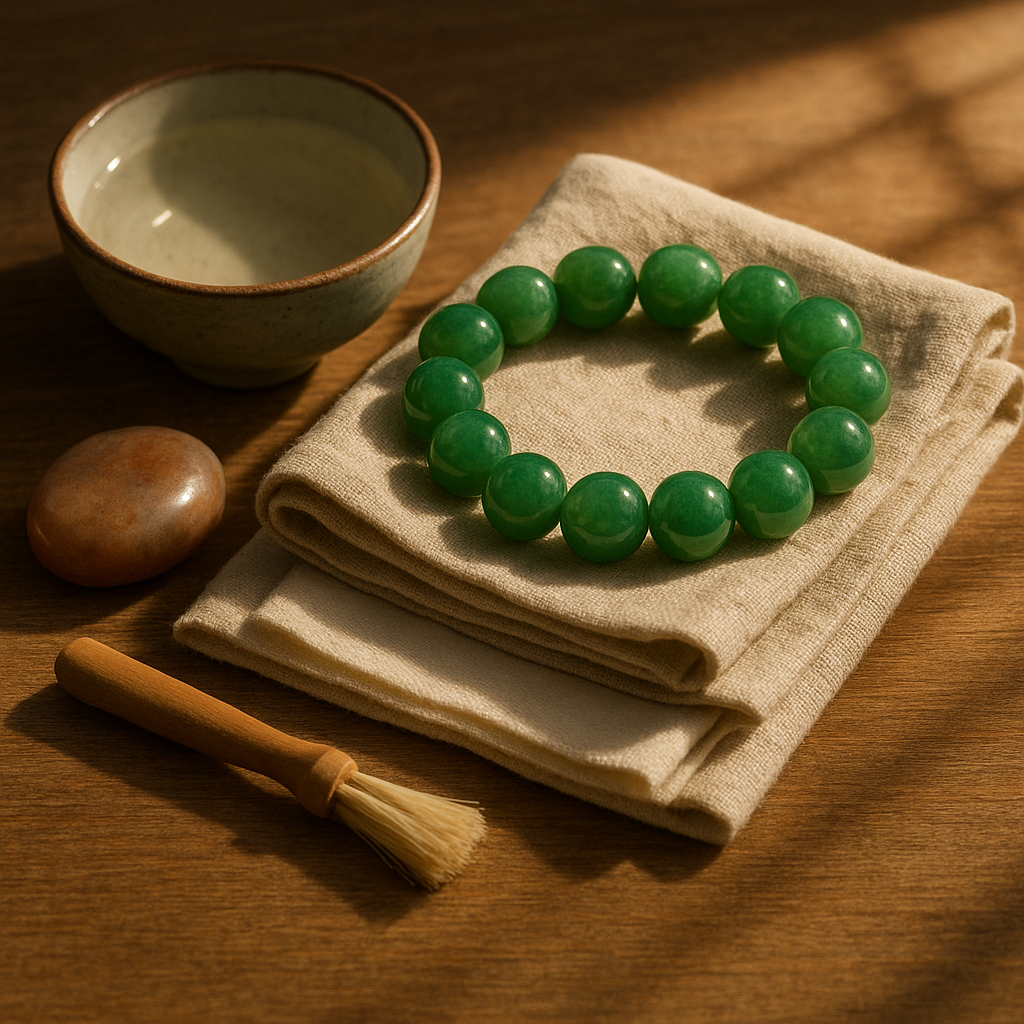
For deeper cleaning, use mild soap in lukewarm water, gently cleansing with a soft cloth or brush. Always rinse thoroughly and pat dry with a soft, lint-free cloth.
Several important precautions will help preserve your jade's integrity:
- Avoid exposure to harsh chemicals including perfumes, cosmetics, and cleaning solutions
- Remove your jade bracelet before swimming in chlorinated pools or salt water
- Protect jade from extreme temperature changes which can potentially cause microscopic fractures
- Store separately from harder gemstones that might scratch the surface
- Keep jade away from prolonged direct sunlight which may gradually affect color
Beyond physical cleaning, many who value jade's energetic properties practice periodic "cleansing" to restore the stone's metaphysical qualities. Traditional methods include:
- Moonlight cleansing – Placing the bracelet under the light of a full moon overnight
- Spring water rinse – Briefly running the bracelet under natural spring water
- Rice cleansing – Burying the bracelet in uncooked rice for 24 hours to absorb negative energies
- Intention setting – Holding the bracelet while consciously reaffirming its protective purpose
If your jade bracelet breaks (which traditional wisdom considers a sign it has protected you from harm), many specialists can repair it with minimal visibility. However, some traditionalists prefer to preserve the broken pieces separately as a reminder of protection received.
With thoughtful care, your Persian jade bracelet will develop a deeper luster over time – what collectors call a "polish of use" that enhances rather than diminishes its beauty and cultural significance.
Conclusion
Persian jade bracelets represent a fascinating intersection of history, cultural meaning, and enduring style. From ancient royal courts to contemporary fashion, these distinctive pieces continue to captivate with their beauty and significance. Whether you're drawn to jade for its rich symbolism, protective qualities, or simply its aesthetic appeal, these bracelets offer a meaningful way to connect with tradition while expressing personal style.
The enduring appeal of Persian jade lies in its remarkable versatility – simultaneously a connection to ancient wisdom and a thoroughly modern accessory. By understanding jade's cultural significance, symbolic meanings, and proper care techniques, you can fully appreciate these remarkable pieces and perhaps find the perfect jade bracelet to become part of your own personal story.
Whether worn as a statement of cultural appreciation, a protective talisman, or simply an elegant accessory, a Persian jade bracelet carries layers of meaning that transcend fleeting fashion trends. In a world of disposable accessories, jade stands apart – an enduring symbol of protection, prosperity, and timeless beauty worth passing from one generation to the next.
Frequently asked questions (FAQ's)
What is the symbolism of Persian jade bracelets?
Persian jade bracelets symbolize protection, luck, health, prosperity, and sometimes spiritual growth, drawing on both Persian mythology and global traditions.
How do you tell if a Persian jade bracelet is genuine?
Look for jade's coolness to the touch, natural imperfections, translucency, density, and avoid stones with bubbles or that scratch easily. Certificates or expert verification are ideal.
Which wrist should you wear a jade bracelet on?
Traditionally, jade is worn on the left wrist to receive good energy and protection, though personal preference and comfort also apply.
How can you care for and clean your jade bracelet?
Gently clean with mild soap and water, avoid chemicals and prolonged sunlight, and store separately to prevent scratches. Some also recharge jade with moonlight or salt.
Are Persian jade bracelets suitable for modern fashion?
Yes! Persian jade bracelets can be worn solo for elegance or stacked for a contemporary look, and pair beautifully with both traditional and modern outfits.

